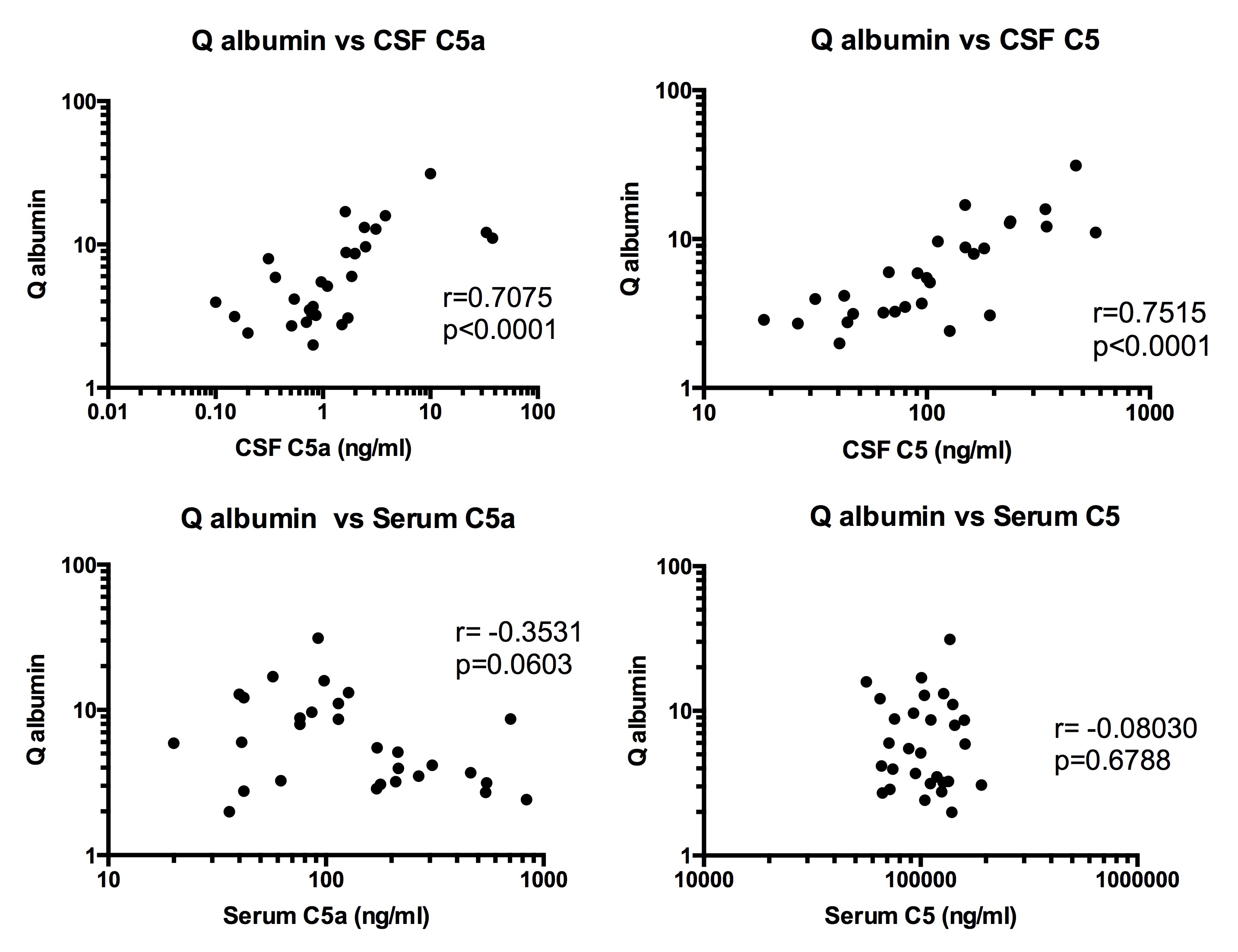Session Information
Date: Tuesday, November 15, 2016
Title: Systemic Lupus Erythematosus – Clinical Aspects and Treatment - Poster III: Biomarkers and Nephritis
Session Type: ACR Poster Session C
Session Time: 9:00AM-11:00AM
Background/Purpose: Neuropsychiatric manifestation in systemic lupus erythematosus (NPSLE) is one of the most serious complications of the disease. We have recently demonstrated that the breakdown of blood brain barrier (BBB) plays a crucial role in the development of diffuse psychiatric/neuropsychological manifestations (diffuse NPSLE), allowing influx of neuron-reactive autoantibodies from systemic circulation into the central nervous system. Notably, C5a, a split product of C5, has been recently shown to cause BBB damages, as evidenced by the decreased expression of barrier regulating proteins, such as claudin-5 and occludin. However, the relationship between serum C5a and BBB damages in NPSLE has not been explored. On the other hand, although association of C5a with some forms of lupus nephritis (LN) has been implicated, the involvement of C5a in LN has not been examined. The present study therefore explored the levels of C5a in sera from patients with NPSLE and LN.
Methods: Serum specimens were obtained from 29 patients with NPSLE including 18 patients with diffuse NPSLE and 9 patients with neurologic syndromes (focal NPSLE), 25 patients with LN, 26 patients without NPSLE or LN (SLE alone), and from 21 healthy individuals. Cerebrospinal fluid (CSF) specimens were obtained from 29 patients with NPSLE on the same day of the collection of serum specimens. The levels of C5a, C5, C3 and C4 were measured by ELISA. The BBB function was evaluated by CSF /serum albumin ratio (Q albumin).
Results: Serum C5a was significantly increased in 80 SLE patients compared with that in healthy individuals. Serum C5a was significantly elevated in NPSLE as well as in LN compared with that in SLE alone, whereas there were no significant differences in serum C5 among these 3 groups. Serum C4, but not serum C3, was significantly lower in LN than that in NPSLE, indicating the activation of complement classical pathway in LN, but not in NPSLE. CH50 appeared to be also lower in LN compared with that in NPSLE. Q albumin was significantly elevated in diffuse NPSLE compared with that in focal NPSLE, whereas there were no significant differences in CSF C5a and in serum C5a between these 2 groups. Of note, both CSF C5 and CSF C5a were significantly correlated with Q albumin, whereas serum C5a, but not serum C5, was inversely correlated with Q albumin in NPSLE patients (Figure ).
Conclusion: These results have disclosed that serum C5a was elevated in NPSLE as well as in LN through different mechanisms. Moreover, the data indicate that CSF C5a and C5 were elevated in NPSLE due to BBB damages. Finally, inverse correlation between serum C5a and Q albumin suggest that C5a might be consumed during the process of BBB damages. 
Figure Relationship of blood brain barrier integrity with C5a or C5 in cerebrospinal fluid (CSF) or in serum in NPSLE.
To cite this abstract in AMA style:
Sakuma Y, Nagai T, Yoshio T, Hirohata S. Serum C5a Is Elevated in Lupus Nephritis and in Neuropsychiatric Systemic Lupus Erythematosus through Different Mechanisms [abstract]. Arthritis Rheumatol. 2016; 68 (suppl 10). https://acrabstracts.org/abstract/serum-c5a-is-elevated-in-lupus-nephritis-and-in-neuropsychiatric-systemic-lupus-erythematosus-through-different-mechanisms/. Accessed .« Back to 2016 ACR/ARHP Annual Meeting
ACR Meeting Abstracts - https://acrabstracts.org/abstract/serum-c5a-is-elevated-in-lupus-nephritis-and-in-neuropsychiatric-systemic-lupus-erythematosus-through-different-mechanisms/
